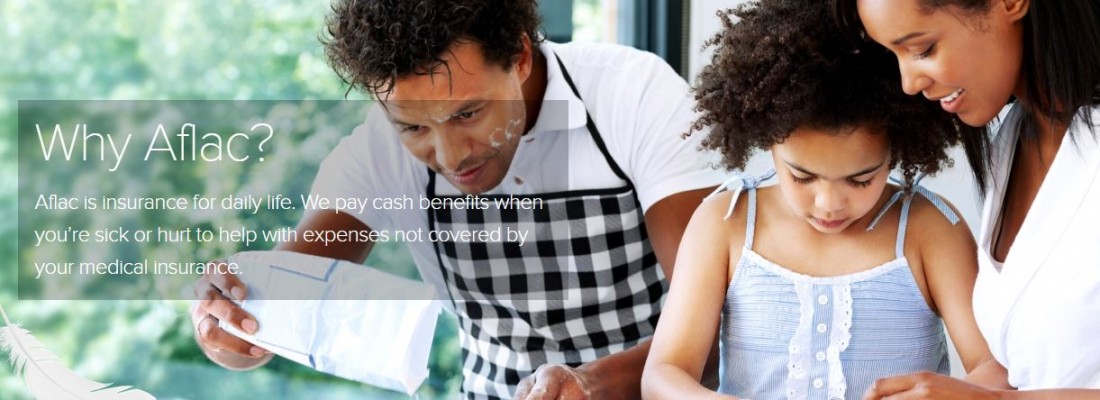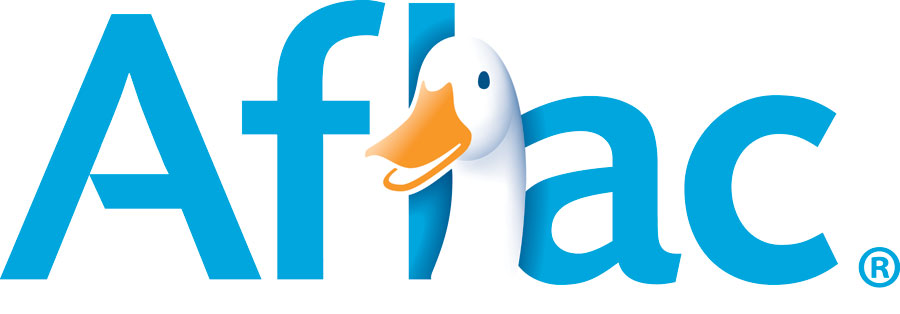Fall is here already. Can you believe it? Where did the summer go? For me it seemed to fly by. Now it’s leaves falling, pumpkins, time to plan your family’s Halloween costumes, but more importantly, fall marks open enrollment season. It is a time when employees can review their employee sponsored benefits and choose the plans that are most beneficial to them.
My family is everything to me. I spend all of my extra time with them, and love every minute of it. That is why it is very important to make sure that should anything bad happen, my husband and I have the coverage we need to still be able to provide for them.
Insurance needs change as your life changes. Having insurance when you are young and single is different than when you are married and have children, or are older. Different needs for different times in life. Voluntary insurance policies are a good option because they let you choose the plans that make the most sense for your specific time in life.
According to a recent Aflac survey, 66 percent of workers would not be able to adjust to the large financial costs associated with a serious injury or illness, and 49 percent have less than $1,000 on hand to pay out-of-pocket medical expenses.1
Voluntary policies complement major medical coverage, they help pay put of pocket expenses. These cash benefits can help pay bills, buy groceries, pay childcare expenses, rent, or anything else you need when an unexpected sickness or injury occurs.
Selecting healthcare benefits is likely one of the most important decisions Americans will make. Yet, an Aflac survey found that many workers do very little research to learn which plans and products really work best for them. In fact, 34 percent of employees spent 15 minutes or less researching their benefit options in 2014.1
When you don’t take the time to do your research you generally end up with inadequate healthcare for yourself and your family.
Aflac has many voluntary policies to choose from. Below is a great list from Aflac of voluntary insurance options and who they will benefit most. This will help get you started in your insurance plan research.
Critical Illness Insurance
- According to the Centers for Disease Control and Prevention (CDC), heart disease is the leading cause of death in the United States; more than 600,000 Americans die of heart disease annually. To put that in perspective, that’s 1 in every 4 deaths in this country.2
- The truth is that no one is immune to life-altering illnesses. Critical illness protection helps you stay ahead of the medical and out-of-pocket expenses that result from certain medical issues, such as a stroke or heart attack. Critical illness insurance helps cover expenses from initial diagnosis through treatment for covered health events.
- Those who should consider this product –
- Generation X
- Baby boomers
- Those who have a family history of heart disease, stroke or heart attack.
Accident Insurance
- The National Safety Council indicates that the average medical expense for an accidental injury is $5,500. And according to the Centers for Disease Control, there are more than 80 million injury-related visits to doctors’ offices, hospital outpatient departments and emergency-treatment facilities in the U.S. each year.4
- Accident insurance helps provide everyday financial protection in the event of a covered accident. Benefits are paid for things like x-rays, physical therapy, appliances, emergency treatment and more.
- Those who should consider this product –
- Everyone, especially parents with accident-prone children as well as active adults (athletes and adventure-seekers).
Cancer Insurance
- In the U.S., the lifetime risk of developing cancer is slightly less than a 1 in 2 risk for men and a little more than 1 in 3 for women. In addition, more than 1.6 million new cancer cases are expected to be diagnosed in 2015 alone.5
- Having a cancer insurance policy in place can help protect you from the sometimes overwhelming costs associated with being diagnosed with cancer. These types of voluntary policies can be used not only for treatment expenses not covered by major medical insurance, but also for extra child care that may be needed, transportation to and from the doctor or treatments, and even everyday living expenses, such as mortgage payments or groceries.
- Those who should consider this product –
- Millennials
- Parents
- Those who have a family history of cancer.
Hospital Indemnity Insurance
- Hospital inpatient care accounts for nearly a third of U.S health care costs, and there’s no relief in sight: The average length of a hospital stay is 4.5 days at a cost of $10,400.6
- Even if you have major medical insurance, it likely won’t be enough to cover every expense associated with a hospital stay, such as rising deductibles, copayments and out-of-pocket maximums. Hospital insurance pays cash for covered hospital stays, with optional benefits for diagnostic procedures, surgery, ambulance transport and more.
- Those who should consider this product –
- Millennials/Generation Y
- Parents
- Those who plan to enroll in health plans with high deductibles.
Life Insurance
- Life insurance is not a one-size-fits-all benefit, but it is something to consider, no matter what stage of life you are in. In fact, 50 percent of U.S. households (58 million) say they need more life insurance.7
- For those who are young and single, life insurance can be used to cover funeral/burial expenses, pay off creditor debt or provide parents with funds for retirement. If you are a mom or dad, benefits can help cover your child’s college education, or help your spouse continue to pay the mortgage or any other financial need following the loss of a loved one.
- Those who should consider this product –
- Generation Z and millennials/Generation Y, who may have student loans co-signed by parents or other loved ones.
- Parents with young children and/or other dependents.
- Baby boomers approaching retirement age.
Disability Insurance
- Many people mistakenly believe that the Social Security Administration will provide adequate financial assistance if they become disabled, but that’s not true in all cases. In fact, more than 59 percent of disability claims are denied by the Social Security Administration.2
- In addition, workers’ compensation only covers on-the-job injuries and disabilities, and considering that off-the-job injuries are three times more common than on-the-job injuries, having disability insurance can help you avoid devastating financial situations resulting from an unexpected accident that may leave you unable to work.1
- Short-Term Disability insurance pays a percentage of your income if you are unable to work due to a covered illness or injury. Benefits are paid directly to you, unless otherwise assigned, to help cover things like deductibles, car payments, utility bills and more.
- Those who should consider this product –
- Parents with young children and/or other dependents.
- Those who agree they should take better care of their health (feel stressed or need more sleep and a better diet).
For more information visit the Aflac Website.

1. 2015 Aflac WorkForces Report conducted in February 2015 by Research Now on behalf of Aflac, accessed Sept. 2, 2015 – http://workforces.aflac.com/
2. Centers for Disease Control and Prevention, “Heart Disease Facts,” accessed Sept. 2, 2015 – http://www.cdc.gov/heartdisease/facts.htm
3. Injury Facts, 2014 Edition, National Safety Council
4. Social Security Administration, “Annual Statistical Report on the Social Security Disability Insurance Program,” accessed Sept. 2, 2015 – http://www.ssa.gov/policy/docs/statcomps/di_asr/2013/di_asr13.pdf
5. American Cancer Society, “Cancer Facts & Figures 2015,” accessed Sept. 16, 2015 – http://www.cancer.org/acs/groups/content/@editorial/documents/document/acspc-044552.pdf
6. Agency for Healthcare Research and Quality, “Healthcare Cost and Utilization Project Statistical Report #180,” accessed Sept. 2, 2015 – http://www.hcup-us.ahrq.gov/reports/statbriefs/sb180-Hospitalizations-United-States-2012.pdf
7. LIMRA, “Facts About Life,” accessed Sept. 2, 2015 – http://www.limra.com/uploadedFiles/limracom/Posts/PR/LIAM/PDF/Facts-Life-2013.pdf
I was selected for this opportunity as a member of Clever Girls and the content and opinions expressed here are all my own.




